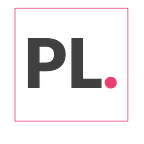Designing Enterprise products? Understand the nuances.
“Enterprise Application”- The first image that comes to mind is some dull, heavy, highly complex, and difficult to use interface. Enterprise applications traditionally have focused more on functionality rather than experience. Interaction designs were always the least prioritized items in the development cycle and this would result in poorly designed applications and frustrated users.
Thankfully companies like Slack, Salesforce and Google have successfully shown us that investing in UX can be immensely beneficial for Enterprise applications too.
The key aspects to be kept in mind while designing for Enterprise applications are :
In Most Cases, The End Users Do Not Choose the Application
The people who purchase enterprise solutions are not the same people who use them every day.
Most enterprise users have their applications chosen for them. These users are required to work with these apps as part of their jobs. They generally do not have an option to move to another application, if they are dissatisfied with the one they have. This is the biggest difference when compared to a consumer application. Thus, it becomes one of the key concerns when designing the User Experiences.
The focus of the Experience design should be to drive Efficiency. Users would want to complete the task fast and correctly. The visual aesthetics are important but NOT as much designing efficient workflows.
The user for such an application would be working with it day in and day out. A few extra clicks or a few unnecessary steps, when performed dozens of times a day, can have huge negative effects on efficiency.
To sum it up, the design should be focused around improving productivity of the users.
We are not trying to increase the number of conversions or attract customers. We should ensure that the users are not frustrated by frequent errors and broken systems.
Compromising on Learnability is an acceptable Tradeoff
As mentioned earlier, Users of an Enterprise Application work with it over and over again. Over time, they start understanding the system and become experts at it. They see the same features, labels or options, multiple times a day. So it is completely fine to use abbreviated labels etc, if it helps in displaying more options on the screen, and thus improving the overall efficiency. Also, users of these applications generally go through an initial training.
However, it does not mean we can get away with complex screen designs, in the hope that trainings would fix it later.
We should invest in understanding the user requirements and journeys and give them enough time to test it, before making the trade-off with Learnability.
A good approach to balance efficiency and learnability is to create a user interface that initially does more hand-holding, and over time lets the users work on their own.
Example : Applications might display an overlay describing the screen and its features the first time. Then it might use shorter labels, when the users are already comfortable using it.
Implement Simplicity by understanding Domain and Workflows
Enterprise Applications are often much more complex than Consumer applications. These might interact across multiple platforms, ERP systems, SaaS applications, Databases and legacy systems. In addition, they need to support many simultaneous users and job functions. Depending on the specific users, the applications might need to support features like logging, authenticating, data security, customization etc.
Thus these applications should be designed to be generic but also customizable.
Enterprise applications represent an entire system of user interfaces and interactions that enable business goals.A major focus in designing the User experience is to understand the user personas. We should then implement Simplicity by designing access based or role based interactions.
Example, an admin persona might want to use features like Logging, security, permissions etc whereas a developer persona might only need to use workflows specific to his job.
In contrast to consumer applications where the Visual designs are guided by Information Architecture, in Enterprise applications, designs are focussed around User tasks and specific workflows. Thus the UX designer needs to have extensive insights about the domain and various interactions within and between user roles.
Good Design is Good Business
UX designers of an Enterprise application must also take a holistic look at how a user experience affects business results. While this is an easier exercise for a consumer application, understanding the same for an enterprise requires a different perspective.
Enterprise UX has often been ignored because the stakeholders could not understand the business implications of investing in it.
We are in the era of agile methodologies and Lean processes, which have no place for slow, complex process oriented systems. Enterprise applications, thus, need to be simple, flexible and adaptable, in tune with ever changing business trends. Enterprise software companies should address these needs and deliver a better UX, making task flows easier and faster. Intuitive Visualizations and feedback based designs would lead to better business benefits.
